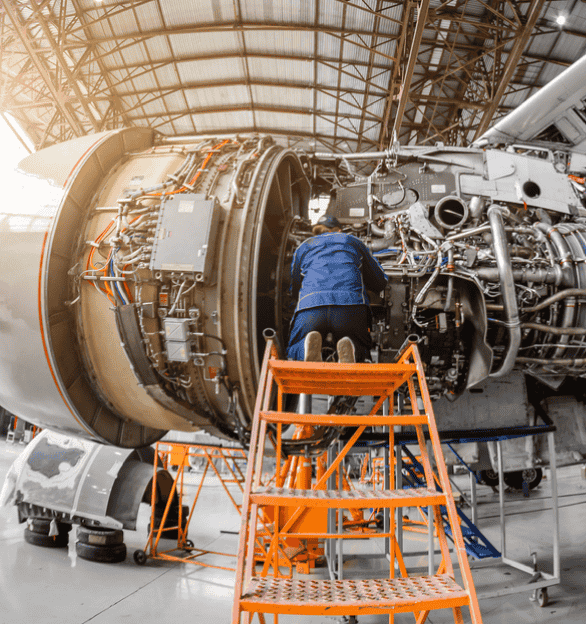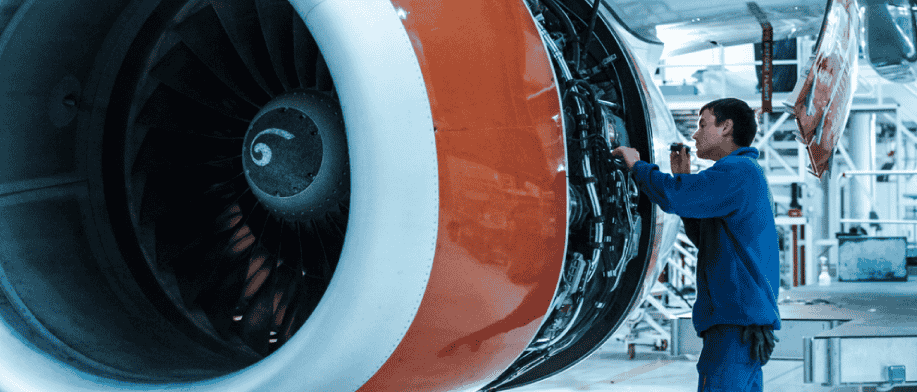
EASA Training
Achieve EASA Certification and Excel in Aviation!
Prepare for a successful career in aviation with Hadron Aviation's EASA training solutions. Our comprehensive programs are designed to equip you with the knowledge, skills, and certifications required to excel in the dynamic field of aviation.
An aircraft is a complex machine which is developed and manufactured involving mechanical, electronic and instrumentation systems. To keep an aircraft in an airworthy condition, it requires a team of highly skilled and knowledgeable Aircraft Maintenance Engineers (AME) to keep them afloat. These AME’s undergo a high level of quality training as stipulated by the EASA (EASA full form is European Union Aviation Safety Agency) to become a certified AME EASA license holder. It is an agency which functions under the European Parliament to ensure the synchronised aviation standards for air safety and is developed for the member states of the European Union. To ensure its global acceptance, the agency has made bilateral agreements with various Governments globally for mutual cooperation in the aviation safety standards.
The EASA certification technical training programs approved by the agency for the aircraft maintenance includes multiple category levels depending upon the aircraft structure and the installed engine.
The EASA courses approved to be carried out in the aircraft maintenance training organization or the EASA Part 147 organization are namely
- Category A (Line maintenance Mechanical)
- Category B1 (Mechanical stream divided into 4 sub-categories namely B1.1, B1.2, B1.3 & B1.4 for heavy and light aircraft)
- Category B2 (Avionics Stream)
- Category C (Heavy Maintenance)
- Category L (Sailplanes, Hot Air Balloons)
AME EASA LICENSE
The aircraft maintenance license issued by EASA in aviation is the most sought after and reputed as compared to any Aircraft Maintenance License or the AML issued by National Aviation Authorities globally. For the purpose of authorization issuance to work on the European registered aircraft located in Europe or any third world countries, holding an EASA License is a must to exercise the aircraft maintenance privileges. EASA AME License is the most recognised and accepted worldwide in all the developed and developing countries. To name a few global airlines like Lufthansa (Germany), Air France (France), KLM (The Netherlands), British Airways (United Kingdom), Qantas (Australia), Singapore Airlines (Singapore), Emirates & Etihad (U.A.E) employ EASA Part 66 license holders to carry out their aircraft fleet maintenance.
EASA courses approved for aircraft maintenance are driven by the necessity of the type of task to be performed on an aircraft. These belong to the Mechanical stream or EASA B license (Cat B1 for Airframe, Power plant, Aerodynamics and System) and Avionics stream (Cat B2 for Electrical, Electronics, Instrument and Radio Navigation). The training programs pertaining to EASA Category A License are focussed on Line or Transit maintenance. The duration of the training program is variable. For Category A, the regulated EASA course minimum training duration is stipulated as 800 hours which includes theory as well as practical elements of skill and knowledge training. For higher level training programs such as EASA Category B1 or B2, the regulated minimum EASA course training duration is stipulated as 2400 hours which includes theory as well as practical elements of skill and knowledge training.
The theoretical elements training include knowledge delivery behind the aircraft aerodynamics, structure and employed systems. As it takes a combination of mechanical and avionics systems to make the complex flying machinery to operate, exposure of hands on tasks to be performed on an aircraft and the associated components becomes a must in order to build up skill levels for enhancing the eligibility for the grant of EASA certification.

Eligibility
- Minimum age by the time of issuance of license is 18 years and the minimum age for the admission in EASA AME training program 14 years
- Candidate must be medically fit with no colour blindness
- Candidates from any stream may enrol for admission (Science, Arts, Humanities, Commerce)
- Candidates must possess Government issued Photo ID card for the issuance of Temporary Airport Entry Passes
Syllabus
- Module 1: Mathematics
- Module 2: Physics
- Module 3: Electrical Fundamentals
- Module 4: Electronic Fundamentals
- Module 5: Digital Techniques / Electronic Instrument Systems
- Module 6: Materials & Hardware
- Module 7: Maintenance Practices
- Module 8: Basic Aerodynamics
- Module 9: Human Factors
- Module 10: Aviation Legislation
- Module 11: Aircraft Aerodynamics, Structures & Systems
- Module 12: Helicopter Aerodynamics, Structures and Systems
- Module 13: Aircraft Aerodynamics, Structures & Systems Avionics
- Module 14: Propulsion
- Module 15: Gas Turbines
- Module 16: Piston Engines
- Module 17: Propellers
Sky-High Careers Await
Unlock Employment Opportunities with EASA Training at Hadron Aviation
EASA AMEs have diverse career opportunities available to them within the aviation industry, with options for specialization, career advancement, and international mobility. Their training and certification provide a strong foundation for a successful career in aircraft maintenance and related fields. Candidates trained as EASA Aircraft Maintenance Engineers (AMEs) have a wide range of career opportunities within the aviation industry. Some potential career paths and opportunities for EASA AMEs are as follows.
Aircraft Maintenance Technician
EASA AMEs can work as technicians responsible for inspecting, repairing, and maintaining aircraft systems and components. They may specialize in specific aircraft types or systems, such as airframe, engines, avionics, or structures.
Line Maintenance Engineer
Line maintenance engineers perform routine maintenance, troubleshooting, and repairs on aircraft at airports to ensure their safe and efficient operation. EASA AMEs may work for airlines, maintenance organizations, or ground handling companies in this role.
Base Maintenance Engineer
Base maintenance engineers conduct more extensive maintenance checks and repairs on aircraft during scheduled maintenance visits. They may work in hangars or maintenance facilities for airlines, maintenance providers, or aircraft manufacturers.
Quality Assurance Inspector
EASA AMEs with experience and additional training may work as quality assurance inspectors, responsible for ensuring that maintenance work meets regulatory standards and industry best practices. They perform audits, inspections, and oversight activities to maintain safety and compliance.
Technical Support Specialist
Some EASA AMEs may transition into roles providing technical support, troubleshooting assistance, or training for maintenance personnel. They may work for aircraft manufacturers, maintenance organizations, or aviation training institutions.
Maintenance Planner/Scheduler
EASA AMEs can also work in maintenance planning and scheduling roles, coordinating maintenance activities, allocating resources, and ensuring that aircraft are maintained in accordance with regulatory requirements and operational needs.
Regulatory Compliance Specialist
EASA AMEs with a strong understanding of aviation regulations and safety standards may pursue careers in regulatory compliance roles, assisting organizations in maintaining compliance with EASA and other regulatory requirements.
Transform your passion into a profession!
Explore our courses and take the first step towards a rewarding career in the skies!
